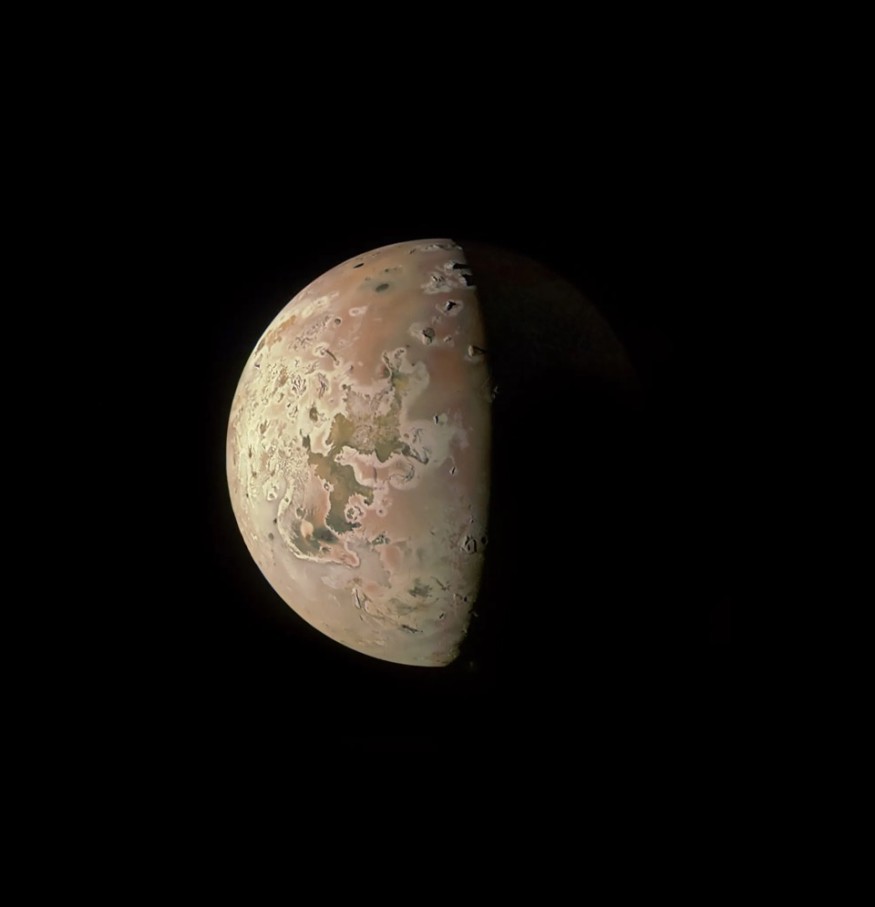NASA explores outer space and the Solar System through crucial missions, closely monitoring the Jupiter mission's 56 flybys and close encounters with three moons.
Recently, the American space agency shared a captivating image of Jupiter's moon Io from the Juno spacecraft flyby, revealing volcanic activity and providing a detailed view of the surface. This exploration holds potential for unraveling Solar System mysteries, and experts share insights on the Juno spacecraft's recent encounter.

Juno's Historic Flyby Unveils Io's Volcanic Activity
On December 30, 2023, the Jupiter probe Juno executed its closest-ever flyby of Jupiter's moon Io, capturing remarkable images that showcase the moon's surface, adorned with sickly, sulfurous hues due to ongoing volcanic activity.
NASA's Juno Flyby Reveals Jupiter's Volcanic Moon in Mind-Blowing Detail https://t.co/58kCWGoHqz
— ScienceAlert (@ScienceAlert) January 3, 2024
This historic flyby brought Juno within a mere 1,500 kilometers (930 miles) of Io's surface, marking the closest approach by any probe in decades. The primary objective of this close encounter is to enhance scientists' understanding of the unique characteristics of Io, a moon known for its intense volcanic activity.
Scott Bolton, an astronomer from the Southwest Research Institute and a member of the Juno science team, clarifies the research objective. The team intends to delve into the variability of Io's volcanoes by merging data obtained from this recent flyby with their prior observations. This investigation encompasses factors like eruption frequency, brightness, and heat.
Additionally, the research delves into understanding how the lava flow shapes change and how Io's activity relates to the flow of charged particles in Jupiter's magnetosphere.
Scheduled for a second ultra-close flyby on February 3, 2024, Juno's scientific instruments are expected to generate substantial data during these encounters. The spacecraft, now in its third year of the extended mission, not only explores Jupiter and its moons but also delves into the mysteries of the gas giant's ring system, where some of its inner moons reside.
Juno Seeks To Unravel Io Mysteries
Io, just slightly larger than Earth's Moon, presents a stark contrast with its dynamic nature. Unlike Earth's relatively inactive Moon, Io experiences significant activity due to its elliptical orbit around Jupiter. The varying gravitational forces exerted by the gas giant subject Io's interior to stresses, resulting in substantial heat generation, rendering it pliable, and causing frequent eruptions.
Further enhancing Io's volcanic spectacle are interactions with other Galilean moons. With approximately 400 active volcanoes, and about 150 erupting concurrently, Io is a captivating display of fiery phenomena.
The emitted volcanic gases don't confine themselves to Io but form a plasma torus encircling Jupiter. This plasma then follows the planet's magnetic field lines, contributing to the creation of enduring and powerful auroras at Jupiter's poles.
Juno's role extends beyond capturing stunning images; it serves as a valuable tool for collecting essential data about Io's place within Jupiter's complex system of moons.
The probe is set to conduct another close flyby of Jupiter's moon Io on February 3, 2024, within 1,500 kilometers, as its instruments exhibit signs of degradation. It is expected to continue operations until September 2025 or until a breakdown occurs.
Scientists seek to unravel the mysteries surrounding Io's internal processes, including its massive volcanic activity, the potential presence of a magma ocean beneath its crust, and the impact of Jupiter's tidal forces, which continuously exert pressure on the moon.
RELATED ARTICLE: NASA's Juno Spacecraft Captures Jupiter Moon Io, Revealing An Incredible Detail of Its Volcanically Active Surface
Check out more news and information on Space in Science Times.
© 2026 ScienceTimes.com All rights reserved. Do not reproduce without permission. The window to the world of Science Times.











